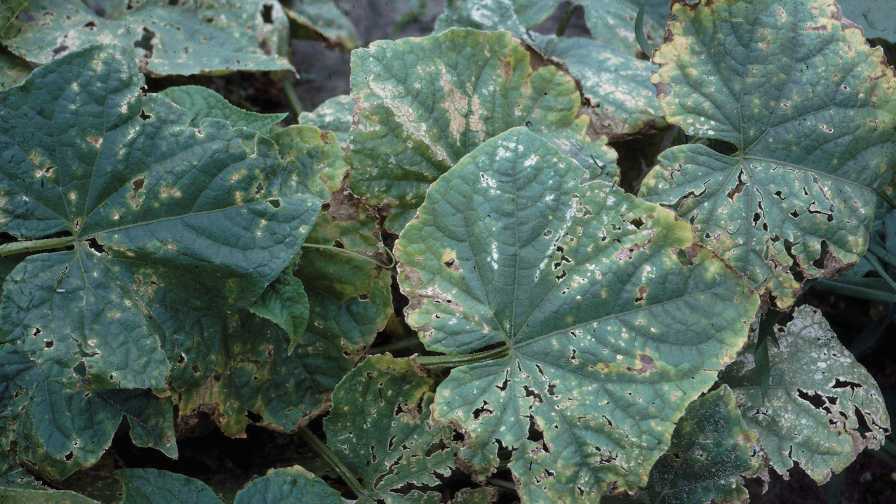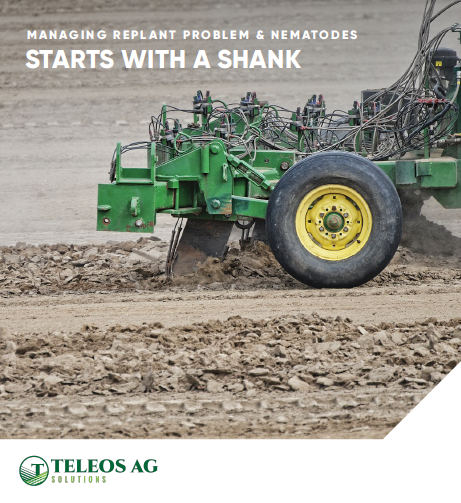Look Close to Help Curb Angular Leaf Spot of Cucurbits

Angular leaf spot is the most widespread bacterial disease of cucurbits worldwide. The disease, caused by Psuedomonas syringae pv. lachrymans, affects a wide variety of cucurbits and is most serious in warm, humid areas.
Photo by R.W. Samson
Angular leaf spot can occur on most cucurbits, but it is most common on cucumber. Initial symptoms are small, water-soaked spots that develop on the undersides of leaves. Under favorable conditions, these lesions expand until they become limited by the larger, secondary veins in the leaf, giving the spots their characteristic, angular shape. Under humid conditions, the water soaking is accompanied by a milky bacterial exudate that dries to form a white crust on the lower surface of the lesion. As the foliar lesions mature, they become straw colored, and the centers often dry and fall out. This gives the leaf a tattered, “shot-hole” appearance similar to those caused by anthracnose.
Infection also can occur on petioles, stems, and fruits. Lesions often display the characteristic, crusty-white exudate. Spots on fruit are usually smaller and circular in shape with a tan center. Fruit infections may provide entry to other bacterial soft-rot pathogens.
Survival and Spread
Angular leaf spot may be seedborne. On seed, the bacteria are present beneath the seed coat so that upon germination, the cotyledons are infected. The bacteria spread on the plant and from plant to plant by splashing rain, and also by insects, pickers, and equipment. Spread is enhanced when foliage is wet from rain or dew and through abrasions caused by wind-blown sand. The disease may reach epidemic proportions during periods of heavy rains, particularly if temperatures remain high.
Management Methods
As with most vegetable diseases, problems with angular leaf spot can be reduced using an integrated pest management approach using a number of control tactics. The primary cultural control begins with clean, disease-free seed. Seed treatment with hot water is recommended but not completely effective in eliminating bacteria.
Crop rotation with non-cucurbit crops is useful, as is cultivation, to reduce the chance of bacterial survival on debris. Where possible, overhead irrigation should be avoided and drip or furrow irrigation employed. Water that may be contaminated with the bacterium should be avoided. Workers and equipment should be kept out of fields when plants are wet.
When the disease is present, frequent applications of copper fungicide as a foliar protectant will assist in control. The addition of an EBDC fungicide (such as mancozeb) will enhance the effectiveness of the copper treatment. During favorable periods for disease development and epidemic conditions, copper may be ineffective.
A number of cucumber varieties have been developed with resistance to angular leaf spot. When combined with other practices, use of resistant varieties can be effective in reducing losses.
Consult UF/IFAS recommendations for currently labeled fungicides for angular leaf spot.










